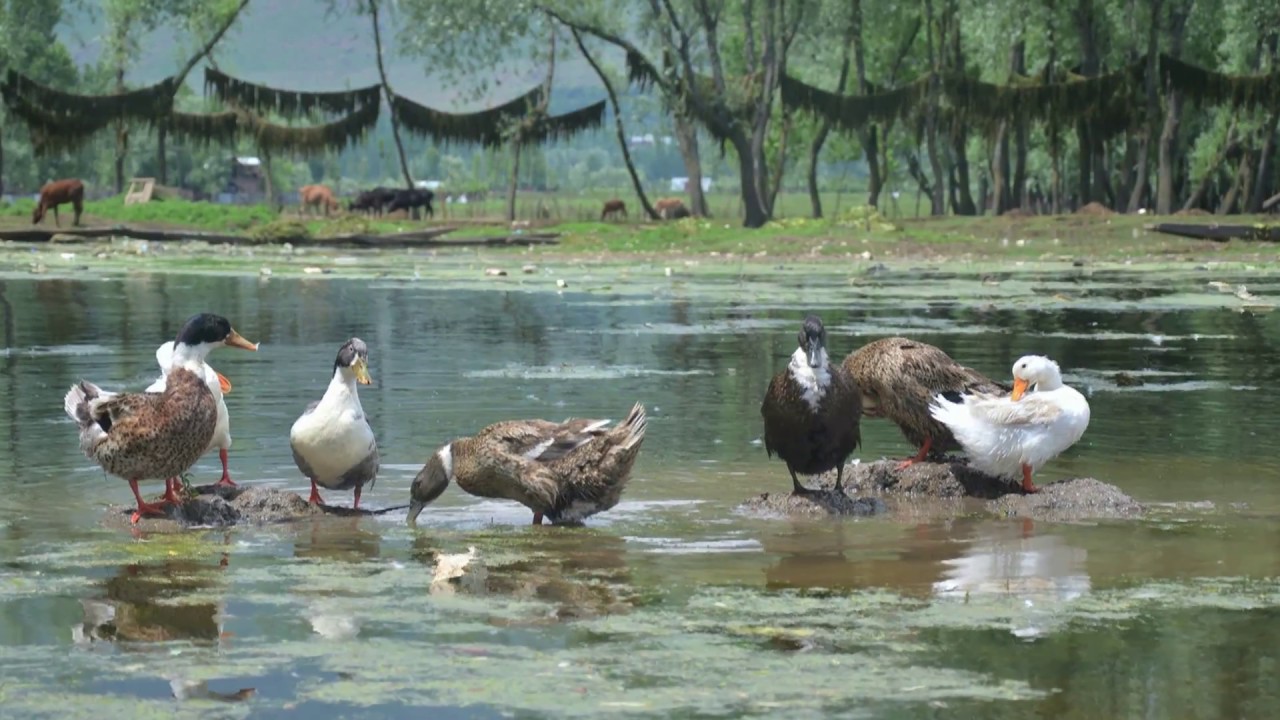Why Kashmir’s ‘Queen of Wetlands’ Is at a Crossroads
By: Javid Amin | Srinagar | 08 Aug 2025
A Wetland Reborn, But for How Long?
Hokersar Wetland, often called the “Queen of Wetlands” in Kashmir, is not just another water body — it’s a living ecosystem that breathes life into the Valley’s biodiversity, agriculture, and climate resilience. Designated as a Ramsar site in 2005 (a global recognition for wetlands of international importance), Hokersar has long been a haven for migratory birds and a critical water reservoir for Srinagar city.
In recent years, however, the wetland’s health declined due to encroachment, siltation, and unchecked human interference. But now, thanks to new hydrological interventions — including the construction of inlet and outlet gates — Hokersar is showing its highest water levels in over two decades. This has renewed hope among conservationists.
Yet, optimism is tempered by a harsh truth: revival is fragile. Without continuous protection, the wetland could slide back into decline.
The Ecological Heart of Kashmir
01. Geography & Significance
-
Location: Situated about 10 km northwest of Srinagar, spanning 13.54 sq km in 2025 (down from 18.75 sq km in 1969).
-
Hydrology: Fed mainly by the Doodhganga and Sukhnag streams, Hokersar acts as a natural flood basin, absorbing excess rain and snowmelt, preventing Srinagar from flooding.
-
Biodiversity Hotspot: Supports over 200 species of birds, dozens of aquatic plants, and countless invertebrates — forming a complex food web.
02. Ramsar Recognition
The Ramsar designation isn’t just a title; it’s a commitment to global conservation standards. Hokersar is part of the East Asian–Australasian Flyway, hosting migratory birds from Central Asia, Siberia, and Northern Europe.
Signs of Renewal – A Wetland Breathes Again
01. Water Retention Boost
The government’s inlet and outlet gates have done more than just control water — they’ve transformed the wetland’s dynamics:
-
Maintained optimal depth for aquatic vegetation.
-
Prevented premature drainage for agriculture.
-
Reduced habitat loss for wintering waterfowl.
Hydrologists note that these levels are the highest since the early 2000s, reversing years of low-water stress.
02. Migratory Bird Haven
Last winter, Hokersar welcomed over 1.3 million migratory birds — including:
-
Greylag Geese
-
Northern Pintails
-
Eurasian Wigeons
-
Common Teals
-
Mallards
-
Rare sightings like the Ferruginous Pochard, classified as Near Threatened by the IUCN.
This influx is a direct ecological vote of confidence.
03. GIS Surveillance & Legal Enforcement
The Wildlife Protection Department has mapped the wetland boundaries using GIS technology. Officials claim:
-
No new encroachments in recent years.
-
Active patrolling has curbed illegal construction.
-
Legal notices served to violators under the Wetland Conservation and Management Rules, 2017.
Persistent Threats – Old Wounds Still Open
01. Legacy Cultivation
Decades of seasonal paddy farming along the wetland fringes have reduced its area and altered its ecology. Despite regulations, political pressure and vote-bank politics often shield offenders.
02. Water Drainage for Agriculture
Post-migration season, some farmers illegally drain wetland water to expand cultivation, leaving aquatic plants dry and vulnerable. This seasonal drying disrupts:
-
Breeding cycles of resident birds.
-
Natural silt flushing mechanisms.
-
Aquatic plant regeneration.
03. Political Interference
Several conservation drives have been aborted midway due to resistance from local power brokers who allegedly protect land grabbers. This makes on-ground enforcement a political minefield.
04. Ecological Degradation
Key causes:
-
Siltation from upstream deforestation.
-
Weed infestation choking waterways.
-
Domestic waste discharge from nearby habitations.
Result: Wetland area has shrunk by over 5 sq km in five decades.
What’s Needed – A Roadmap for Sustainable Revival
01. Year-Round Water Retention
Experts urge the government to:
-
Maintain optimal water depth throughout the year.
-
Introduce seasonal zoning for bird nesting vs. controlled human access.
-
Avoid summer drainage except in emergencies.
02. Transparent Demarcation
A final boundary report from the Revenue Department is awaited. This will:
-
Provide a legal framework to prosecute encroachers.
-
Enable fencing and signage.
-
Prevent land disputes.
03. Community Engagement
Conservation without local buy-in is unsustainable. Steps include:
-
Eco-tourism initiatives providing jobs as bird guides, boat operators, and hospitality staff.
-
Awareness drives in schools and community centers.
-
Training farmers in wetland-friendly agriculture.
Global Lessons – Wetlands Saved Elsewhere
Hokersar’s revival challenges mirror those faced by:
-
Keoladeo National Park, Rajasthan – Water diversion nearly destroyed its ecology.
-
Sundarbans, Bangladesh/India – Encroachment and climate change threaten mangroves.
-
Danube Delta, Europe – Successful restoration through community-led conservation.
These examples show that consistent funding, legal backing, and community stewardship are non-negotiable for success.
The Economic & Climate Angle
Wetlands like Hokersar:
-
Act as carbon sinks.
-
Buffer floods and droughts.
-
Support fisheries and agriculture.
-
Attract birdwatchers and researchers, boosting eco-tourism.
Losing them means economic loss and climate vulnerability.
Bottom-Line: The Fragile Future
Hokersar Wetland is standing at a crossroads. The recent hydrological boost has brought it back to life, but threats from encroachment, political apathy, and ecological neglect still hover. Protecting it requires political courage, scientific vigilance, and community trust.
If Kashmir loses Hokersar, it loses more than a wetland — it loses a living piece of its environmental heritage.


